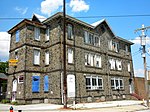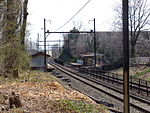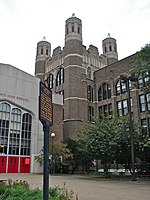Wayne Junction station
1881 establishments in PennsylvaniaFormer Baltimore and Ohio Railroad stationsFormer Reading Company stationsHistoric district contributing properties in PennsylvaniaHistoric district contributing properties in Philadelphia ... and 7 more
NRHP infobox with nocatNicetown-Tioga, PhiladelphiaRailway stations in the United States opened in 1881Railway stations on the National Register of Historic Places in PhiladelphiaSEPTA Regional Rail stationsStations on the SEPTA Main LineUse mdy dates from August 2023

Wayne Junction station is a SEPTA Regional Rail junction station located at 4481 Wayne Avenue, extending along Windrim Avenue to Germantown Avenue. The station is located in the Nicetown neighborhood of Philadelphia. Wayne Junction serves as a multi-modal transfer point between six of SEPTA's regional rail lines as well as three major transit routes – the Route 75 Trackless Trolley and the Route 23 and 53 bus lines. The station served more than 321,000 riders annually in 2018.
Excerpt from the Wikipedia article Wayne Junction station (License: CC BY-SA 3.0, Authors, Images).Wayne Junction station
Germantown Avenue, Philadelphia
Geographical coordinates (GPS) Address Nearby Places Show on map
Geographical coordinates (GPS)
| Latitude | Longitude |
|---|---|
| N 40.023 ° | E -75.1595 ° |
Address
Germantown Avenue
19118 Philadelphia
Pennsylvania, United States
Open on Google Maps











